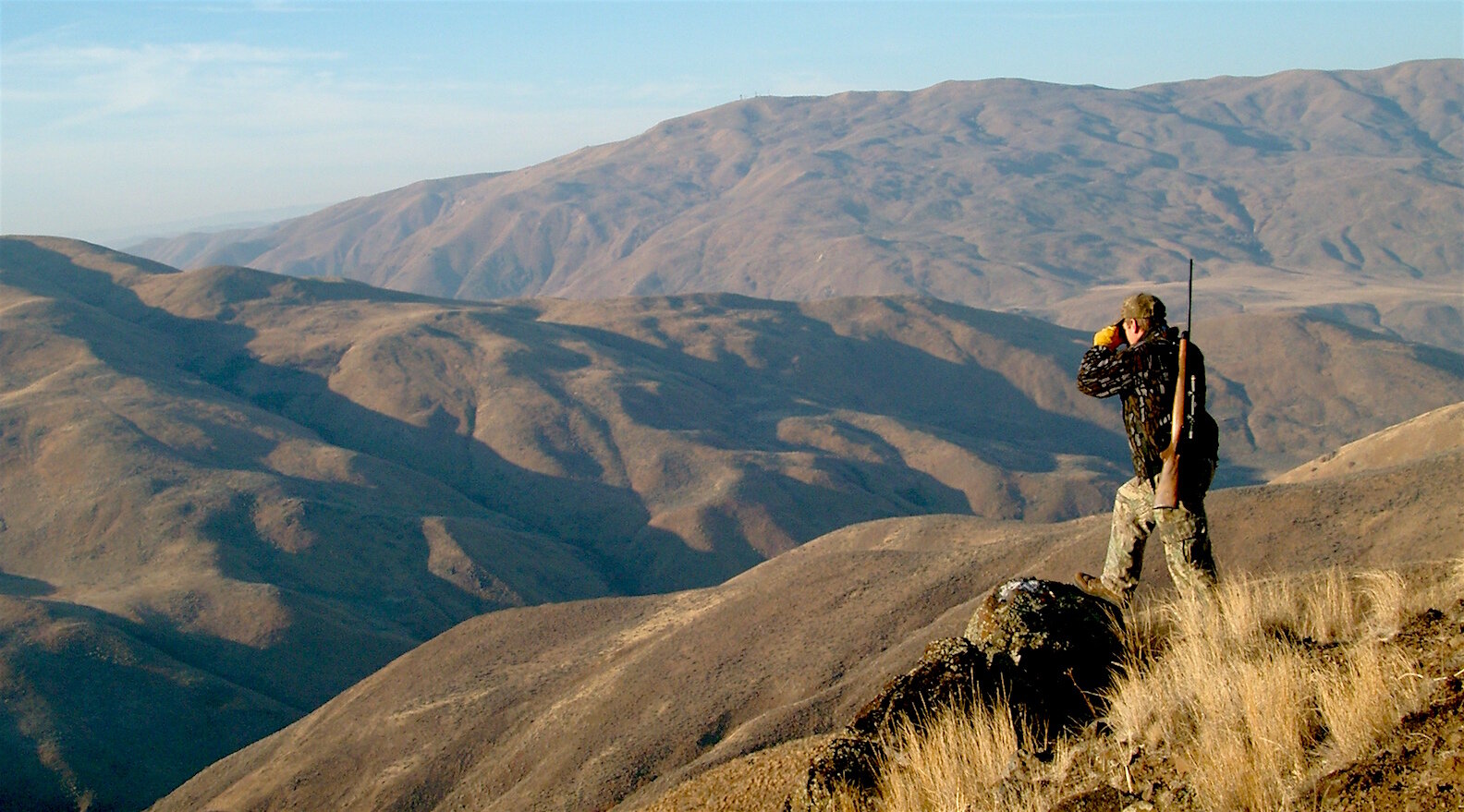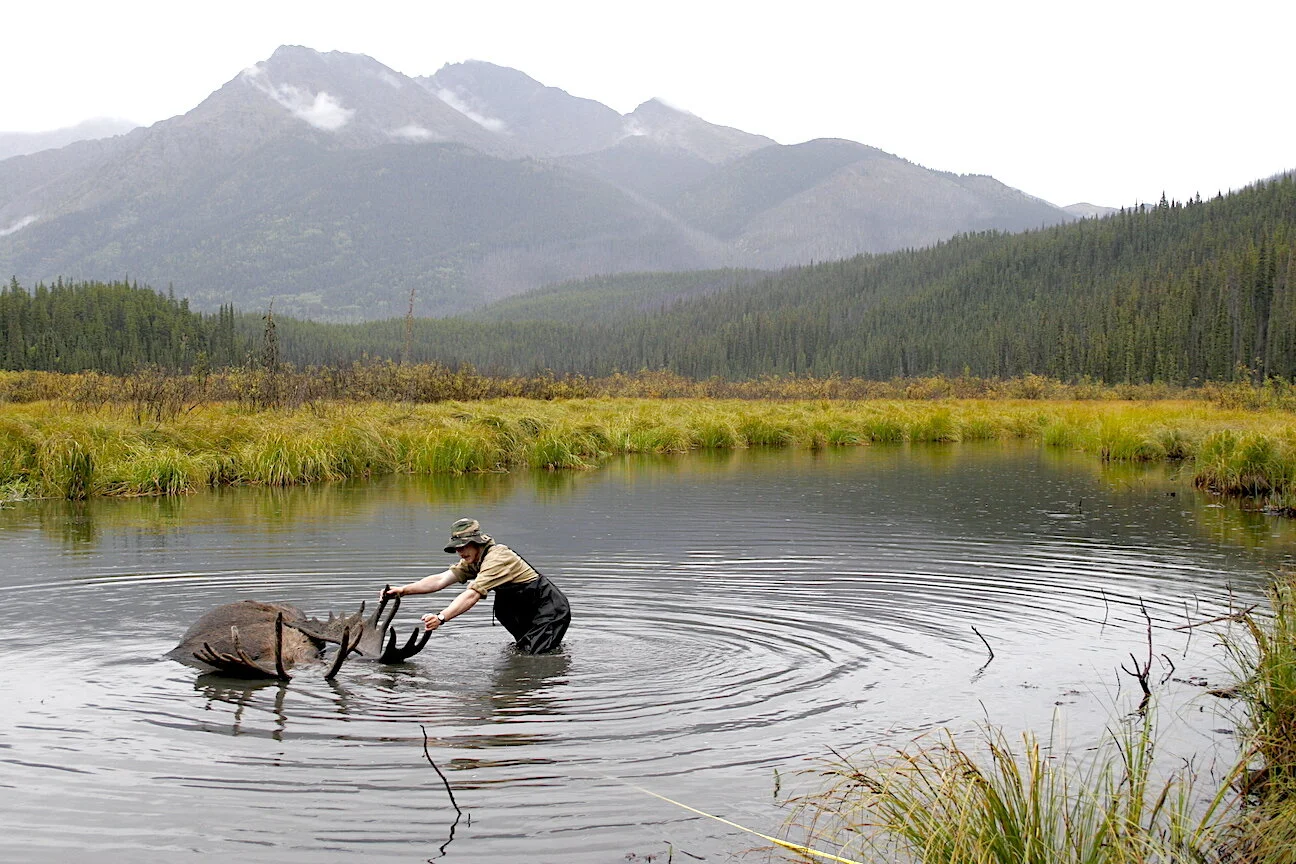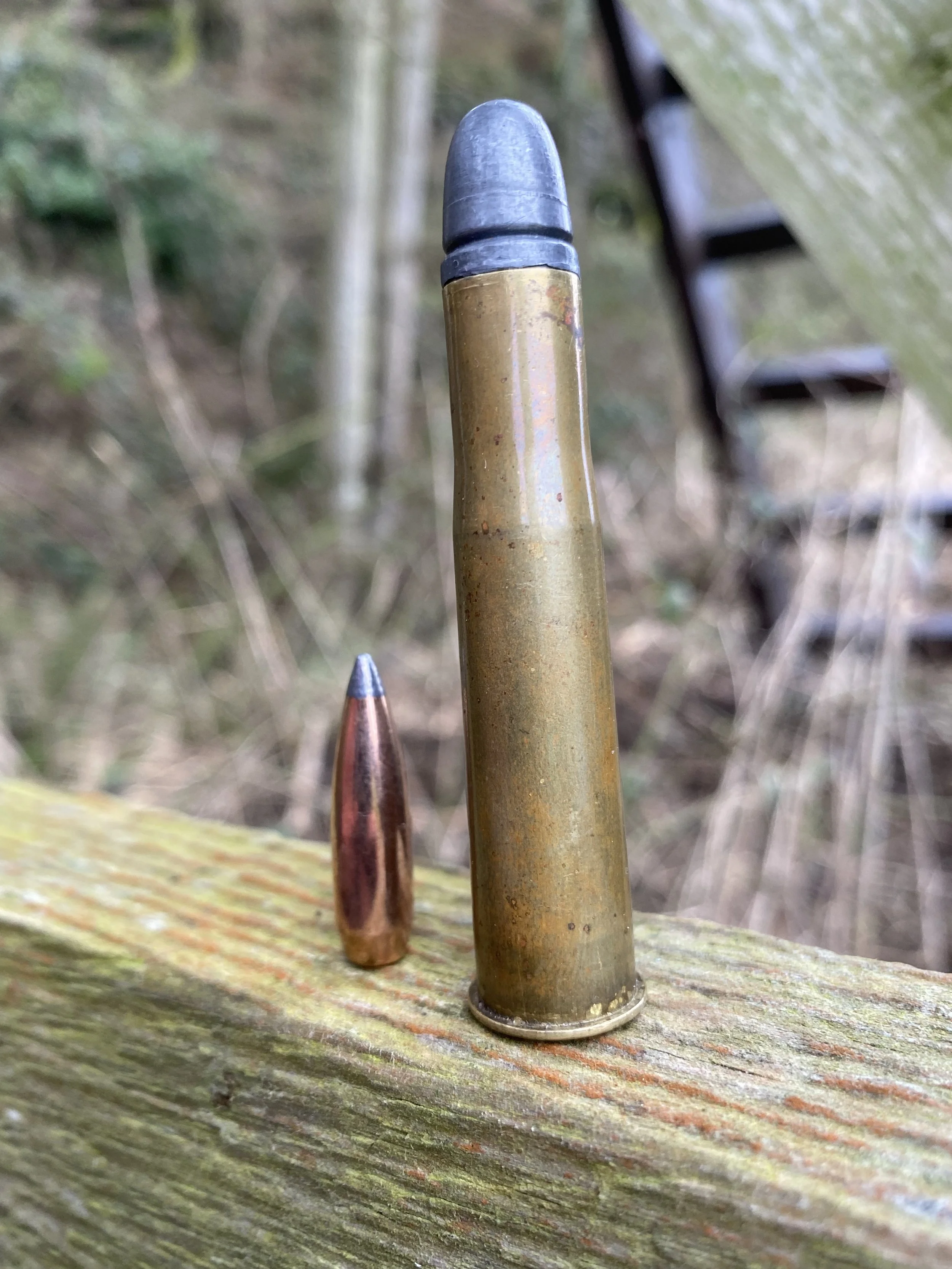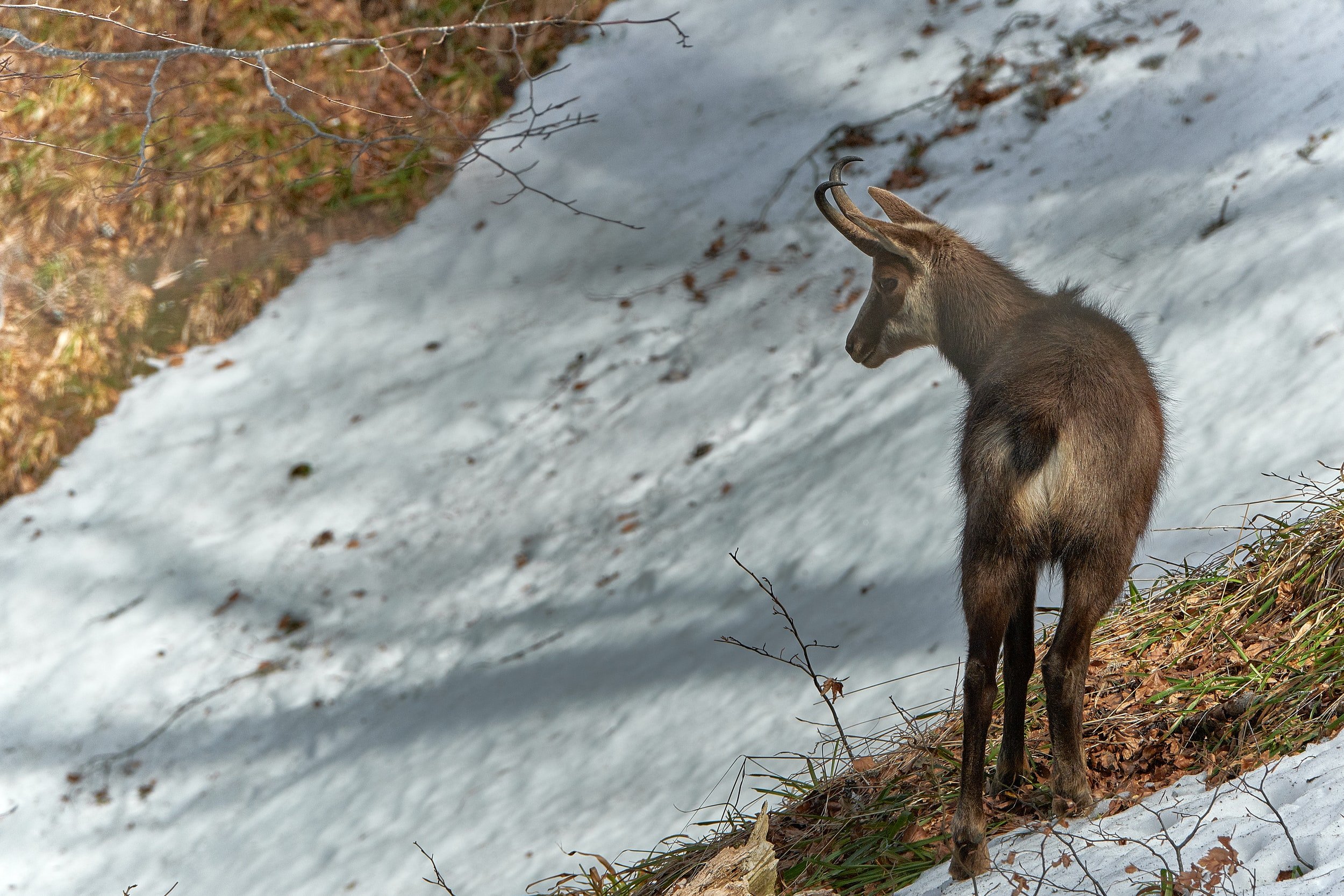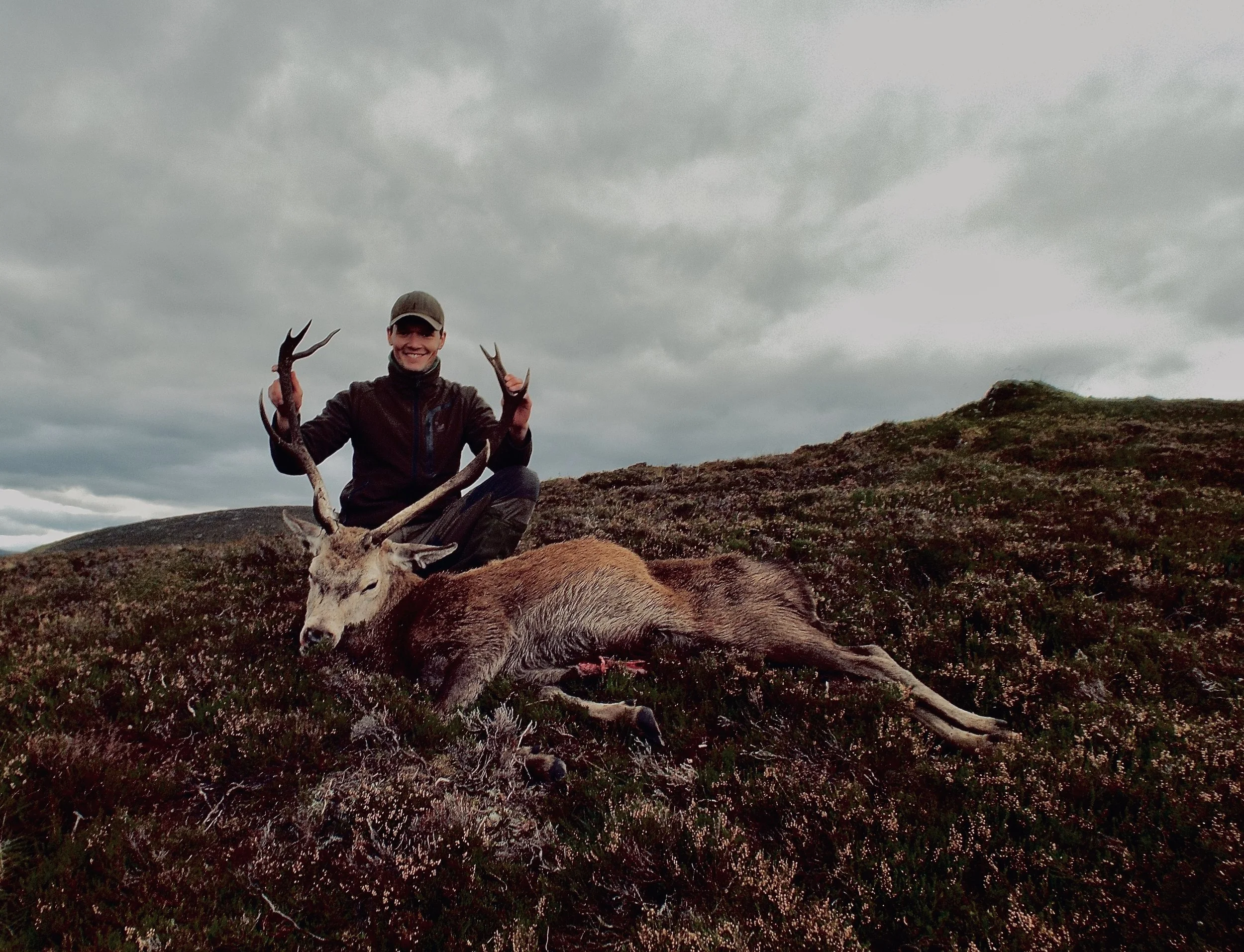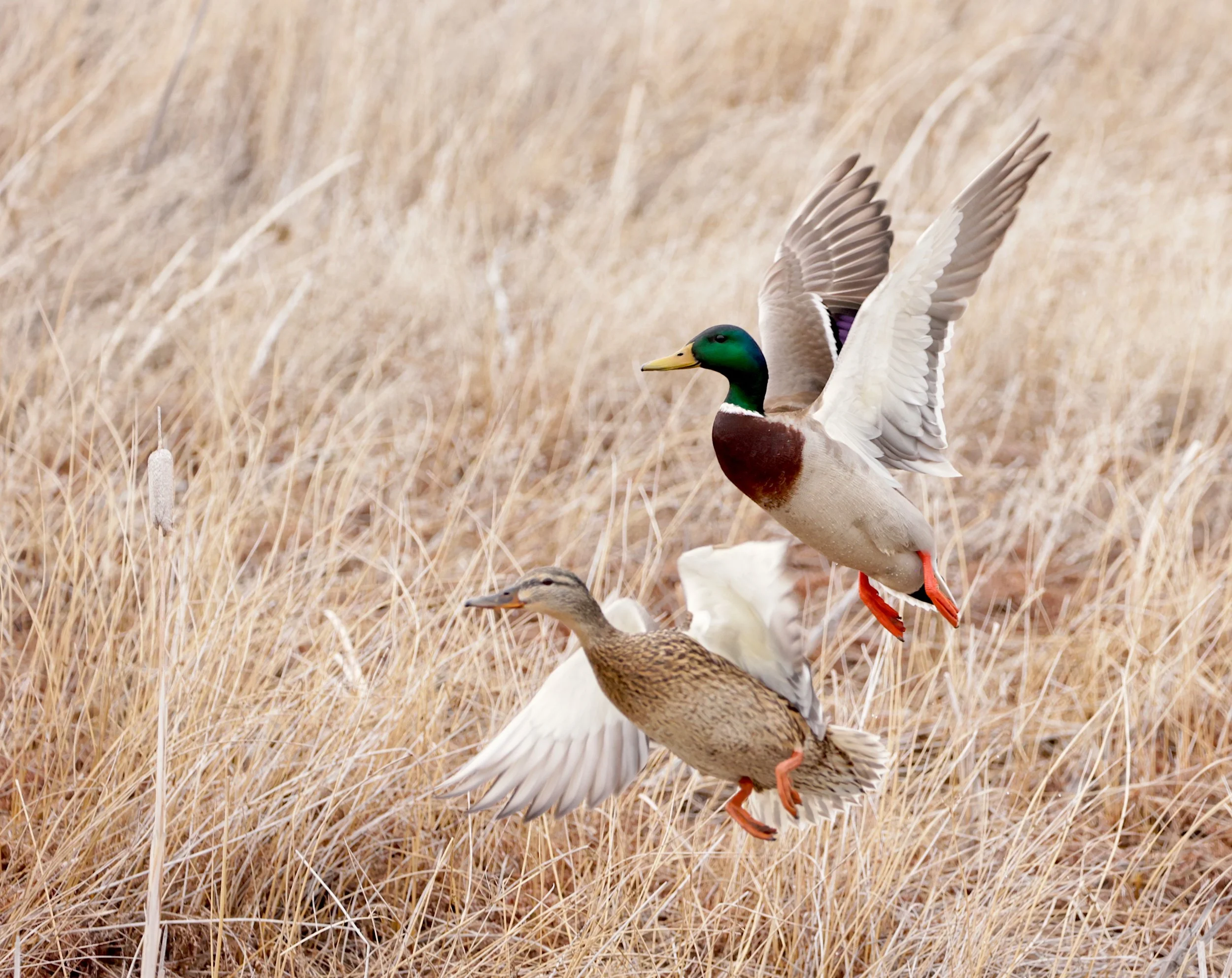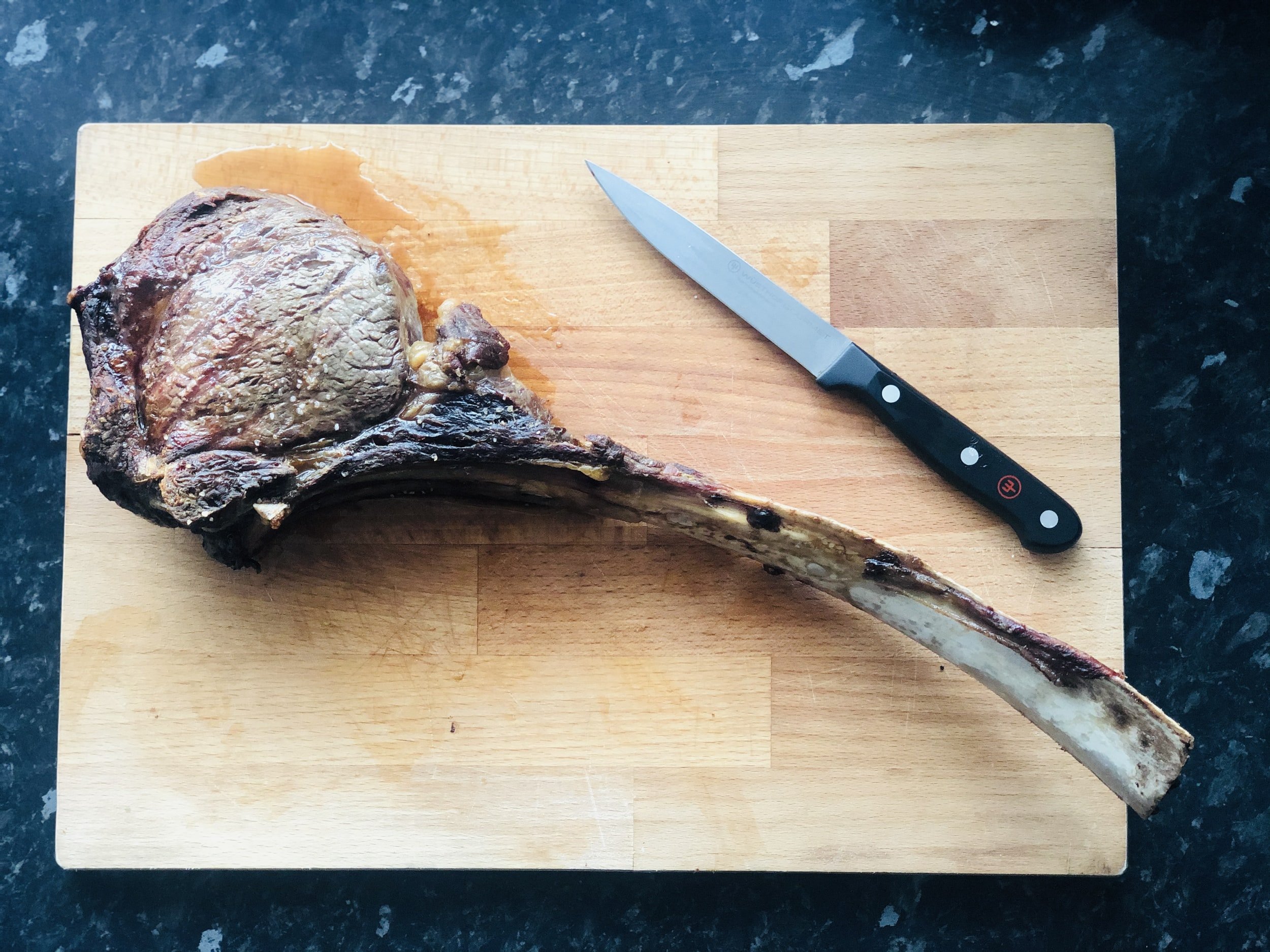375 H&H Failure Again?
Could there possibly be another 375 H&H magnum failure? Could massive knockdown power have fallen short yet again?
It looks like it.
Photo of Federal Premium 375 H&H ammo illustrates the cartridge, but this is not the ammo involved in the 375 H&H failure featured in this report.
Often cited as the ultimate do-it-all medium-caliber big game cartridge, the 375 H&H Magnum has been used to good effect on every game animal around the world for more than a century. The Federal 375 H&H Magnum Trophy Bonded Bear Claw load shown here was not involved in the 375 H&H failure on the "warthog incident" below. This is high quality ammo and the Trophy Bonded Bear Claw is a tough, dependable, proven bullet for big, potentially dangerous game. Nevertheless, hunters must be aware that any cartridge, bullet, and shot can "fail" due to the unpredictable nature of the animals we hunt. Hunters are advised to concentrate on shot placement, quick follow-up shots, and careful tracking. Magnum power cannot compensate for poor shot placement.
How to Lose Friends and Influence People by Reporting 375 H&H Failure
Not long ago I posted a blog on this site that questioned the highly vaunted performance of the venerable 375 H&H Magnum. I followed that blog with another report about the less-than-stellar performance of another supposed "can't-fail" heavy hitter, the 45-70. Many readers, perhaps most, took exception with my claims about 375 H&H failure, suggesting I was biased, a poor shot, inexperienced, even a prevaricator. Never mind that other hunters were involved in many of the incidents I cited. Here's another (below) from Darrel Holland at https://www.hollandguns.com/.
Image shows a warthog with an old injury made by a 375 H&H failure.
This is an excerpt from Darrell Holland's newsletter, a great source for no nonsense gun, ammo, and ballistic data.
375 H&H Failure Is Not Cartridge Failure. It's...
I can assure you Holland is a careful observer and straight shooter. If he says XYZ happened and ABC caused it, that's the way it went down. And that's why I'm reposting this little anecdote and photo from his newsletter. (Subscribe by emailing bestrifles@gmail.com.) Coincidentally, Holland's story plays right into my blog last week about the risk of trusting the knockdown power of any cartridge/bullet.
Holland, much like me and probably you, has discovered that you can crank up the mass and foot-pounds all you want, but if you don't put that shot in the right spot, your little piggy could miss its trip to the market. An additional 0.10" or 0.20" wider bullet, another 50 or 100 grains of mass aren't going to make much difference.
In recent years Holland and his shooting school students have culled some 800 African animals with a wide variety of cartridges, rifles, and bullets from 243 Winchester to 375 H&H Magnum. Holland has maintained careful records, all of them further convincing him that -- as many of us know -- the right bullet in the right place beats magnum power and heavyweight mass in the wrong place every time. This does not mean the 375 H&H failure is due to any inherent shortcoming of that cartridge. It just suggests that bigger is not necessarily better. Bullet placement and performance, not magnum size and power, is the critical ingredient in terminal performance.
It Was, Is, and Always Will Be Placement
Bullet placement isn't everything. Just most of it. Obviously you need sufficient power (kinetic energy) and bullet expansion to penetrate and tear vital tissue and organs, but the 22 Long Rifle has proven time and again that kinetic energy requirements are shockingly small. This doesn't mean this or any other small cartridge/bullet is equal to the 375 H&H anymore than the 375 H&H is equal to a 460 Weatherby Magnum. But, as this warthog (which probably didn't weight 100 pounds) proves, if you don't strike vital organs and your bullet doesn't cause sufficient hemorrhaging, no real or imagined knockdown power will compensate.
That's the take away from all these 375 H&H failures I've been reporting. It's not that this particular brass case holding 67 grains of Hodgdon 4895 powder pushing 300 grains of metal 2,500 fps is inherently less effective than any other brass case pushing X grains of metal X fps. We hunters have spent too many years, too many words arguing and defending specific containers of powder rather than the bullets that top them and where we place those bullets. Don't try to compensate for poor shooting with a bigger magnum.
PHoto of guide and womand hunter with a dead common reedbuck doesn't illustrate a 375 H&H Failure, but close. The 160-pound ram reacted as if untouched and dashed 100 yards before expiring.
Despite catching a 300-grain bullet, this whitetail-sized, Mozambique common reedbuck dashed off as if untouched for a good 100 yards before finally expiring. I don't consider my wife's one-shot kill a 375 H&H failure, but knockdown power? Where? Betsy's using a Blaser R8, Zeiss 2.5-10x50 Victory scope with illuminated reticle, and
Zeiss Victory 10x32 binocular,
the sharpest, highest-contrast 10x32 I've ever seen. Our PH, Mike, is wearing a
Zeiss 10x45 Range Finder binocular
. This hunt took place in
Mark Haldane's concession in the Zambezi Delta
where he and his crew, funded by hunter dollars, have increased buffalo and other game by 10X during the past two decades.
The Rifle Loyalty Factor
I understand why hunters get defensive about their favorite rifles and cartridges. Rifles are more than mere tools for most of us. They become our partners in the field, sharing many of our greatest adventures, challenges, and accomplishments. For many of us, our rifles are integral partners in our hunts. And those hunts are more than diversion, more than just putting meat on the plate. Our hunts fulfill an instinctive, natural role bequeathed to each of us in various measure. Our hunting rifles connect us to the real world, the cycle of life and death for which we were created as omnivores and tool-using hunters. In short, hunting isn't what we do; it's who we are.
Image shows an Ultra Light ARms M20 rifle as an example of a tool for which the author has a special connection and needn't worry about 375 H&H Failure.
As a lifelong hunter I'm well aware of the special bias hunters develop toward certain rifles. I've carried this Ultra Light Arms M20 in 284 Win. from Arctic to desert, using it to claim mountain goats, Dall's rams, elk, mule deer, and one of the biggest whitetails of my life. Light, lively, easy to carry and whip into action, yet deadly accurate. Literally no game animal this rifle and I have engaged has escaped. I don't appreciate anyone telling me my ULA rifle is too light or the 284 Winchester too puny to do the job. But I don't begrudge them their opinion.
Just the Facts, Ma'am
At the risk of upsetting some readers, I try to not shrink from the truth in my writings. But, as often accused, I do have an agenda. Before I reveal it let me state this: While I'm as susceptible as anyone to myths, traditional wisdoms, and bias, in my writings I try to remain neutral. I research facts, question the status quo, and report what I learn. If that ends up casting a shadow upon some reader's favorite cartridge, bullet, rifle, or scope, that is no reflection on that person. Or me. Guns, scopes, and ammunition are just tools. There is nothing sacred about them. And ballistics is just the study of physics. We can no more alter it than gravity. But understanding it can help us improve our shooting and choose the best cartridges, barrel lengths, bullets, etc.
Confessing My Biased Agenda
If you've accused me of pushing an agenda, you're right. I am biased toward effective tools that help me enjoy my precious time in the bosom of Nature, putting a spring in my step, pride in myself, and organic, free-range, 100% natural, cruelty-free meat on my table. My agenda is to report on the physical realities of guns and ammo and how they perform so that my readers can make informed choices for their own needs.
Hunter glassing big hills and valleys while shouldering a custom M70 rifle, which has nothing to do with 375 H&H Failure except by association. It, too, can fail if it doesn't direct bullets to the right spot.
I don't think my rifles or cartridge choices are sacred, but my time in the bosom of Nature can be. Shouldered here above the dramatic hills and valleys of Idaho's Snake River is a
Custom M70 chambered in 6mm Remington, one of the better 24-caliber creations that fizzled due to poor marketing and an ill-advised rifling twist rate. The more other shooters bash it, the more I embrace it.
More importantly, I hope to instill in readers an appreciation for our natural world, the places and creatures that nurture us physically and spiritually. These include wildflowers as well as elk and deer. Whether we hunt nothing or everything from squirrels to elephants, we depend on an intact, functioning natural world. Alas, that world is rapidly disappearing under a relentless onslaught of humans. It's not just cities and suburbs that pave over places we used to hunt. It's industrial agriculture producing the food and fiber everyone needs to survive. Literally millions of acres of grasslands, forests, marshlands, and even deserts are destroyed each year to produce more corn, wheat, rice, oranges, kale etc. for hungry humans. This shows no signs of stopping. Yet the Earth shows no signs of growing, so we are literally obliterating the wildlife we love in favor of more domestic crops and livestock.
Right or Wrong?
Whether this is right or wrong is a personal opinion. Nature sure as heck doesn't care. She'll just roll along, taking it all in stride, the same as she did when dinosaurs, North American cheetahs, and cave bears went extinct. This "dinosaur" author, however, will care. Because I love the free and wild places that have inspired, enthralled, and enriched my life all these decades. And I'm hoping they'll do the same for my grandkids. But they won't. They can't. Many of them are already gone and the rest are probably already being rezoned commercial or housing or heavy industrial --- something other than open, wild and free.
Image shows hunter and dog with a brace of upland game birds, pheasant and ruffed grouse, examples of sustainable conservation hunting
Covey and I thoroughly enjoy our annual interactions with the wildlife we nurture on Dancing Springs Ranch. We collected this ringneck rooster and ruffed grouse on the last day of the 2018 season. That unusual looking jacket is a 100% merino
WeatherWool All-Around Jacket.
Why You Can't Hunt a Ram
These are the reasons why most of us will compete to draw that once-in-a-lifetime bighorn, mountain goat, or moose tag. It's why we wait five years to draw a pronghorn tag in a trophy unit, why we find fewer and fewer places to loose the dogs and walk up quail. It's why creatures as small and ubiquitous as monarch butterflies are declining drastically. We cannot "save the Earth," as environmental sentimentalists constantly harp. The Earth is too big to fail and we are too insignificant to destroy it. But we can seriously screw up and impoverish the biosphere if we continue converting its biomass to Homo sapiens. Banning plastic bags and straws isn't going to cut it. We must return to a hands-on, honest, personal, sustainable interaction with the natural plants and animals of Earth. Displacing them with Genetically Modified Organisms spells the end of hunting and the wilds we love.
This Rant's Tie-In to 375 H&H Failure
What does this rant, this agenda of mine, have to do with 375 H&H failure, knockdown power, or guns and ammo? Well, without wild things in wild places, all our hunting tools become mere frivolity. Without wild lands and game to hunt, all our hunting guns will become mere curiosities, historical artifacts like whale-oil lamps, cathode ray tube radios, and dial telephones.
Is that what we really want?
An aerial view of a new housing development encroaching on wild lands. The more this continues, the fewer opportunities we'll have to puzzle over 375 H&H Failure.
Ever expanding human developments mean fewer and fewer wild lands, wildlife, and hunting opportunities. Soon the odd 375 H&H Failure won't matter because there will be no place to hunt.
Ron Spomer tries to minimize his impact on wildlife and wild places by living off-the-grid, minimizing his "carbon footprint" by using solar, wind, and wood-produced energy while procuring his family's protein from native fish and game. He maintains native sage-steppe habitat on Dancing Springs Ranch, supporting pheasants, gray partridge, sharp-tailed grouse, ruffed grouse, blue grouse, mule deer, elk, moose, orioles, tanagers, chickadees, black chinned hummingbirds and myriad other wild critters.







